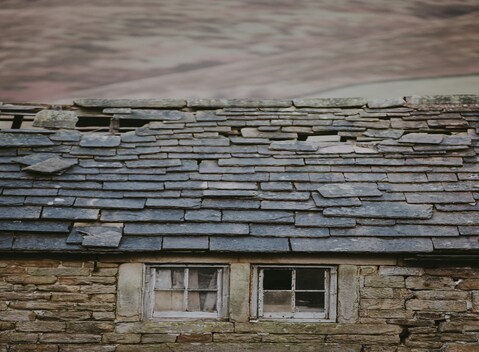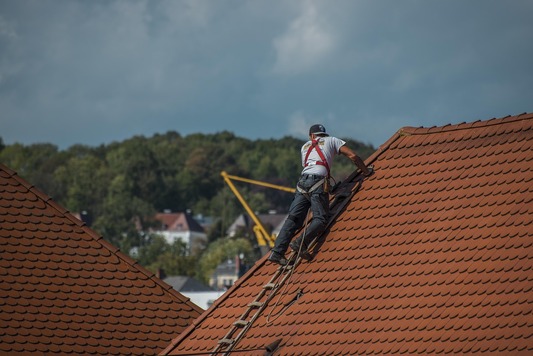Your roof is your first line of defence against the unpredictable weather in Maryland and DC. From summer to cold winters, your roof keeps you safe and comfortable. Keeping your roof in great shape is crucial for your home’s look, safety, value, and comfort. Ignoring this might cause you to face problems later.
But when do you move from small repairs to a full roof replacement? That’s a key question for protecting your biggest investment: your home.
In this guide, we’ll talk about all the signs that it’s time for a new roof, from the clear warnings to the subtler hints. With this information, you can ensure your roof will continue to protect your home and keep your family safe and snug.
Evaluate the Age of Your Roof
Even if there aren’t any glaring signs of damage, at some point, your roof will simply reach the end of its reasonable lifecycle based on age, the type of material used, the quality of installation, and the local environmental conditions. In Maryland and D.C., where asphalt shingle roofs are the most common, you can expect a lifespan of between 15 and 30 years. If your roof is nearing or has exceeded this age, it’s a clear signal to begin planning for a replacement. While other roofing materials like metal, tile, or slate might boast longer lifespans, they also require periodic inspections to ensure quality.

Spot Visible Signs of Wear and Damage
Remember to check your roof regularly for signs of deterioration. Key indicators include:
- Curled, Cracked, or Missing Shingles: These issues are often caused by weather wear or deeper structural problems. In Maryland and D.C., where temperatures fluctuate widely, shingles can curl, crack, or go missing. This compromises the roof’s ability to protect your home.
- Granules in the Gutters: As asphalt shingles age, they shed granules, which often accumulate in the gutters. A significant build-up of granules is a tell-tale sign that your shingles are nearing the end of their functional life.
- Sagging or Uneven Roof Surface: This can indicate structural problems like weakened decking or foundational issues. Immediate attention is needed to prevent further damage.
Identify Leaks and Water Damage
Water intrusion is a major red flag indicating roof problems. After heavy rain or snow, inspect your attic for signs of leaks. If you notice water stains on your ceilings or walls, or sunlight is visible through the roof boards, your roof’s integrity is compromised. In the humid climate of Maryland and D.C., even small leaks can quickly lead to mold and mildew, which worsens the problem and can lead to health issues.
Assess Energy Efficiency Loss
An old or damaged roof can lead to significant energy loss, a particularly pressing issue in the Mid-Atlantic region with extreme climate. Increased heating or cooling bills can be caused by inadequate roof insulation or ventilation. Upgrading to a new roof with modern materials and proper installation techniques can enhance your home’s energy efficiency, this helps reduce energy costs and improve indoor comfort.
Inspect Flashing and Seals
The flashing around vents, chimneys, and skylights is essential for keeping water out of your home. If you see cracks, rust, or breaks in the flashing, water could seep through your home, causing internal damage. Regular inspection and timely repair or replacement of these components are crucial in preventing more significant issues.
Monitor Moss and Algae Growth
In the often damp climate of Maryland and D.C., moss and algae growth on the roof is not just an aesthetic issue. These growths can trap moisture against the roof surface, leading to rot and deterioration. While certain treatments can clean and temporarily protect the roof, extensive growth often signals that a more comprehensive solution, like a replacement, may be necessary.

Keep Up with Neighboring Roof Replacements
If you notice a trend of roof replacements on houses built around the same era as your home, it’s wise to evaluate your roof’s condition. Homes in your neighborhood face similar environmental factors that impact roof longevity.
Schedule a Professional Roof Inspection
Sometimes, the signs of roof wear are obvious with professional expertise. If you’re unsure about the condition of your roof, arranging for a professional inspection can provide the clarity you need. A qualified roofer can assess the entire roofing system, including the structure, materials, and workmanship, offering a comprehensive evaluation of its remaining lifespan and any immediate concerns.
Keeping your home safe and snug is simpler than you might think! By being aware of these signs, you can avoid any unexpected issues with your roof.
A healthy roof leads to a happy, dry home, after all. Plus, taking good care of your roof can enhance its appeal and even boost your home’s value—a real win-win situation!
There’s no need to stress over roof replacement. With careful planning and the help of an expert, you can make this a smooth and rewarding endeavor. So, let go of the worries, welcome the improvements, and look forward to the peace of mind that a sturdy roof brings!





